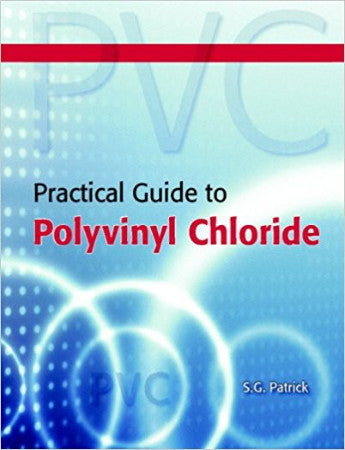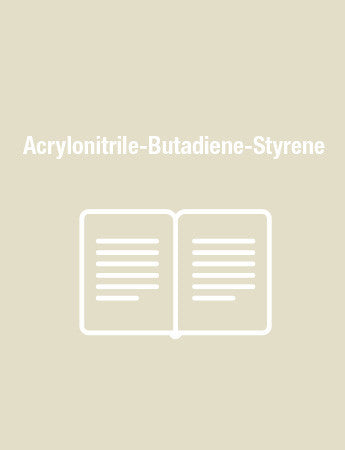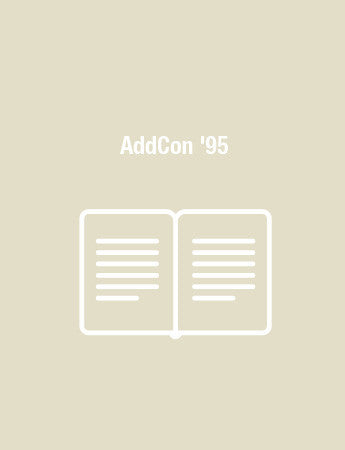Practical Guide to Polyvinyl Chloride
Polyvinyl chloride (PVC) has been around since the late part of the 19th century, although it was not produced commercially until the 1920s; it is the second largest consumed plastic material after polyethylene. PVC products can be rigid or flexible, opaque or transparent, coloured, and insulating or conducting. There is not just one PVC but a whole family of products tailor-made to suit the needs of each application.
Rapra's Practical Guide to PVC is packed with information for everyone working with PVC. It provides a comprehensive background on the resins and additives, their properties and processing characteristics, as well as discussion of product design and development issues.
PVC is extremely cost effective in comparison to other plastics with a high degree of versatility in end-use and processing possibilities, as the reader will note from this book. It is durable, easily maintained, and can be produced in a large range of colours. As a result, PVC finds use in an extensive range of applications in virtually all areas of human activity, including medical equipment, construction applications such as flexible roof membranes, pipes and window profiles, toys, automotive parts and electrical cabling.
The PVC industry has also started to tackle some of its end-of-life issues.
There have been, and still are, issues and perceptions over environmental and health acceptance covering vinyl chloride monomer, dioxins, phthalate plasticisers, and lead (and cadmium) based heat stabilisers and these are discussed in depth in this book.
This book will be of interest to raw materials suppliers and processors or end-users of PVC, as well as anyone with a general interest in this versatile material: resins and additives properties and testing design issues processing, including post processing and assembly property enhancement sustainable development.
Rapra's Practical Guide to PVC is packed with information for everyone working with PVC. It provides a comprehensive background on the resins and additives, their properties and processing characteristics, as well as discussion of product design and development issues.
PVC is extremely cost effective in comparison to other plastics with a high degree of versatility in end-use and processing possibilities, as the reader will note from this book. It is durable, easily maintained, and can be produced in a large range of colours. As a result, PVC finds use in an extensive range of applications in virtually all areas of human activity, including medical equipment, construction applications such as flexible roof membranes, pipes and window profiles, toys, automotive parts and electrical cabling.
The PVC industry has also started to tackle some of its end-of-life issues.
There have been, and still are, issues and perceptions over environmental and health acceptance covering vinyl chloride monomer, dioxins, phthalate plasticisers, and lead (and cadmium) based heat stabilisers and these are discussed in depth in this book.
This book will be of interest to raw materials suppliers and processors or end-users of PVC, as well as anyone with a general interest in this versatile material: resins and additives properties and testing design issues processing, including post processing and assembly property enhancement sustainable development.
1 INTRODUCTION
1.1 Background
1.2 History
1.3 Major Advantages and Limitations
1.3.1 Major Advantages
1.3.2 Limitations
1.4 Applications
1.5 Competitive Materials
1.6 Market Share and Consumption Trend
1.7 Industry Outline and Major Suppliers
1.8 Material Pricing
1.9 Safety, Health, and Environmental Issues
1.9.1 Phthalate Plasticisers
1.9.2 Heat Stabilisers
1.9.3 Bisphenol A/Alkylphenols
1.9.4 Epoxidised Soya Bean Oil (ESBO)
1.9.5 Green Product Procurement Policies/Eco-labelling
1.9.6 End-of-life Issues
1.9.7 Fire Performance
2 PVC RESINS
2.1 Raw Starting Materials
2.2 Vinyl Chloride Manufacture
2.3 Polymerisation
2.3.1 Homopolymers
2.3.2 Copolymers and Terpolymers
2.3.3 Chlorinated PVC (C-PVC)
2.4 PVC Resin Characterisation
2.4.1 Molecular Weight
2.4.2 Particle Size
2.4.3 Bulk Powder Properties
2.4.4 Porosity
2.5 Storage and Transportation
2.6 Role of Additives
2.7 Identification
3 PVC ADDITIVES
3.1 Heat Stabilisers
3.1.1 Solid Form
3.1.2 Liquid Stabilisers
3.2 Plasticisers
3.2.1 PVC/Plasticiser Compatibility
3.2.2 Plasticisation Process
3.2.3 Plasticiser Influence on Physical Properties
3.2.4 Plasticiser Choice and Selection
3.2.5 Plasticiser Types
3.3 Impact Modifiers
3.4 Process Aids
3.5 Lubricants
3.6 Fillers
3.6.1 Calcium Carbonate
3.6.2 Other Fillers
3.7 Flame Retardants (FR) and Smoke Suppressants (SS)
3.8 Pigments
3.8.1 Titanium Dioxide (TiO2)
3.8.2 Other Inorganic Pigments
3.8.3 Organic Pigments
3.8.4 Pigment Concentrates and Masterbatches
3.9 Microbiocides
3.10 Blowing Agents
3.11 Antioxidants and Light Stabilisers
3.12 Other PVC-P Additives
3.12.1 Antistatic Agents
3.12.2 Viscosity and Rheology Modifiers
3.12.3 Bonding Agents/Adhesion Promoters
4 TESTING AND PROPERTIES
4.1 Density
4.2 Water Absorption
4.3 Mechanical Properties
4.3.1 Hardness
4.3.2 Tensile Properties
4.3.3 Flexural Properties
4.3.4 Impact Properties
4.3.5 Fatigue
4.4 Thermal Properties
4.4.1 Thermal Conductivity
4.4.2 Heat Deflection Temperature
4.4.3 Vicat Softening Point
4.4.4 Linear Expansion Coefficient
4.4.5 Specific Heat Capacity
4.4.6 Cold Flex Temperature
4.5 Electrical Properties
4.5.1 Volume Resistivity
4.5.2 Dielectric Constant or Relative Permittivity
4.5.3 Loss Modulus or Dissipation Factor
4.5.4 Breakdown Voltage or Dielectric Strength
4.5.5 Arc Resistance
4.6 Fire Properties
4.6.1 Self-ignition Temperature
4.6.2 Flame Ignition Temperature
4.6.3 Limiting Oxygen Index (LOI)
4.6.4 NBS Cone Calorimeter
4.6.5 Smoke Evolution
4.6.6 Fire Performance of PVC
4.6.7 Fire Testing in the EU
4.7 Optical Properties
4.7.1 Transparency
4.7.2 Gloss Level
4.7.3 Colour
4.8 Surface Properties
4.8.1 Abrasion Resistance
4.8.2 Surface Resistivity
4.9 Biological Behaviour
4.9.1 Assessment under Food and Water Legislation
4.9.2 Assessment under Medical Legislation
4.9.3 Sterilisation
4.10 Resistance to Micro-organisms
4.11 Performance in Service
4.11.1 Maximum Continuous Use Temperature
4.11.2 Stability to Light, UV Radiation, and Weathering
4.11.4 Permeability
5 DESIGN
5.1 Design Considerations for PVC-U Materials
5.1.1 Pipe
5.1.2 Exterior Construction Applications
5.1.3 Interior Construction Applications
5.2 Design Considerations for PVC-P Materials
5.2.1 Electrical Cable
5.2.2 Resilient Flooring
5.2.3 Wall Covering
5.2.4 Roofing Membranes
5.2.5 Coated Metal
5.2.6 Toys and Baby Care Items
5.2.7 Safety and Personal Protection
5.2.8 Automotive and Transport
5.2.9 Advertising Banners
6 PROCESSING OF PVC
6.1 Dry Blend Mixing
6.1.1 High Intensity
6.1.2 Low Intensity
6.2 Liquid PVC Blending
6.3 Gelation
6.4 Melt Processing
6.4.1 Melt Compounding
6.4.2 Extrusion
6.5 Injection Moulding
6.6 Extrusion Blow Moulding
6.7 Calendering
6.8 Plastisol Moulding Processes
6.8.1 Rheology
6.8.2 Spreading or Coating
6.8.3 Rotational, Slush, and Dip Moulding
6.9 Powder Moulding Processes
6.9.1 Fluidised Bed
7 PROPERTY ENHANCEMENT OF PVC
7.1 Crosslinked PVC
7.1.1 Chemical Crosslinking
7.1.2 Irradiation Crosslinking
7.2 Orientation
7.2.1 Pipe
7.2.2 Sheet
7.3 Blends and Alloys
7.3.1 Flexibilisers/Internal Plasticisers
7.3.2 Ultrahigh Molecular Weight (UHMW) PVC
7.4 Nanocomposites
7.4.1 Melt Intercalation
7.4.2 Solvent Method
7.4.3 In Situ Polymerisation
7.5 Wood Composites
8 POST-PROCESSING AND ASSEMBLY
8.1 Post-processing
8.1.1 Thermoforming
8.1.2 Printing and Coating
8.2 Assembly Techniques
8.2.1 Welding
8.2.2 Adhesion
8.3 Mechanical Assembly
8.3.1 Machining, Cutting, and Fastening
9 SUSTAINABLE DEVELOPMENT
9.1 Environmental Attack and Response
9.2 Vinyl 2010/Chlorine Industry Sustainability Commitments
9.2.1 Chlorine Generation
9.2.2 PVC Production Industry Charters
9.2.3 Conversion with Additives
9.3 End of Life and Waste Management
9.3.1 PVC-rich Waste: Mechanical Recycling
9.3.2 PVC Feedstock Recycling
9.3.3 Incineration/Energy Recovery
9.3.4 Controlled Landfill
9.4 Life Cycle Assessments
9.4.1 Eco-profiles
9.5 Social Factors
10 CAUSES OF FAILURE
1.1 Background
1.2 History
1.3 Major Advantages and Limitations
1.3.1 Major Advantages
1.3.2 Limitations
1.4 Applications
1.5 Competitive Materials
1.6 Market Share and Consumption Trend
1.7 Industry Outline and Major Suppliers
1.8 Material Pricing
1.9 Safety, Health, and Environmental Issues
1.9.1 Phthalate Plasticisers
1.9.2 Heat Stabilisers
1.9.3 Bisphenol A/Alkylphenols
1.9.4 Epoxidised Soya Bean Oil (ESBO)
1.9.5 Green Product Procurement Policies/Eco-labelling
1.9.6 End-of-life Issues
1.9.7 Fire Performance
2 PVC RESINS
2.1 Raw Starting Materials
2.2 Vinyl Chloride Manufacture
2.3 Polymerisation
2.3.1 Homopolymers
2.3.2 Copolymers and Terpolymers
2.3.3 Chlorinated PVC (C-PVC)
2.4 PVC Resin Characterisation
2.4.1 Molecular Weight
2.4.2 Particle Size
2.4.3 Bulk Powder Properties
2.4.4 Porosity
2.5 Storage and Transportation
2.6 Role of Additives
2.7 Identification
3 PVC ADDITIVES
3.1 Heat Stabilisers
3.1.1 Solid Form
3.1.2 Liquid Stabilisers
3.2 Plasticisers
3.2.1 PVC/Plasticiser Compatibility
3.2.2 Plasticisation Process
3.2.3 Plasticiser Influence on Physical Properties
3.2.4 Plasticiser Choice and Selection
3.2.5 Plasticiser Types
3.3 Impact Modifiers
3.4 Process Aids
3.5 Lubricants
3.6 Fillers
3.6.1 Calcium Carbonate
3.6.2 Other Fillers
3.7 Flame Retardants (FR) and Smoke Suppressants (SS)
3.8 Pigments
3.8.1 Titanium Dioxide (TiO2)
3.8.2 Other Inorganic Pigments
3.8.3 Organic Pigments
3.8.4 Pigment Concentrates and Masterbatches
3.9 Microbiocides
3.10 Blowing Agents
3.11 Antioxidants and Light Stabilisers
3.12 Other PVC-P Additives
3.12.1 Antistatic Agents
3.12.2 Viscosity and Rheology Modifiers
3.12.3 Bonding Agents/Adhesion Promoters
4 TESTING AND PROPERTIES
4.1 Density
4.2 Water Absorption
4.3 Mechanical Properties
4.3.1 Hardness
4.3.2 Tensile Properties
4.3.3 Flexural Properties
4.3.4 Impact Properties
4.3.5 Fatigue
4.4 Thermal Properties
4.4.1 Thermal Conductivity
4.4.2 Heat Deflection Temperature
4.4.3 Vicat Softening Point
4.4.4 Linear Expansion Coefficient
4.4.5 Specific Heat Capacity
4.4.6 Cold Flex Temperature
4.5 Electrical Properties
4.5.1 Volume Resistivity
4.5.2 Dielectric Constant or Relative Permittivity
4.5.3 Loss Modulus or Dissipation Factor
4.5.4 Breakdown Voltage or Dielectric Strength
4.5.5 Arc Resistance
4.6 Fire Properties
4.6.1 Self-ignition Temperature
4.6.2 Flame Ignition Temperature
4.6.3 Limiting Oxygen Index (LOI)
4.6.4 NBS Cone Calorimeter
4.6.5 Smoke Evolution
4.6.6 Fire Performance of PVC
4.6.7 Fire Testing in the EU
4.7 Optical Properties
4.7.1 Transparency
4.7.2 Gloss Level
4.7.3 Colour
4.8 Surface Properties
4.8.1 Abrasion Resistance
4.8.2 Surface Resistivity
4.9 Biological Behaviour
4.9.1 Assessment under Food and Water Legislation
4.9.2 Assessment under Medical Legislation
4.9.3 Sterilisation
4.10 Resistance to Micro-organisms
4.11 Performance in Service
4.11.1 Maximum Continuous Use Temperature
4.11.2 Stability to Light, UV Radiation, and Weathering
4.11.4 Permeability
5 DESIGN
5.1 Design Considerations for PVC-U Materials
5.1.1 Pipe
5.1.2 Exterior Construction Applications
5.1.3 Interior Construction Applications
5.2 Design Considerations for PVC-P Materials
5.2.1 Electrical Cable
5.2.2 Resilient Flooring
5.2.3 Wall Covering
5.2.4 Roofing Membranes
5.2.5 Coated Metal
5.2.6 Toys and Baby Care Items
5.2.7 Safety and Personal Protection
5.2.8 Automotive and Transport
5.2.9 Advertising Banners
6 PROCESSING OF PVC
6.1 Dry Blend Mixing
6.1.1 High Intensity
6.1.2 Low Intensity
6.2 Liquid PVC Blending
6.3 Gelation
6.4 Melt Processing
6.4.1 Melt Compounding
6.4.2 Extrusion
6.5 Injection Moulding
6.6 Extrusion Blow Moulding
6.7 Calendering
6.8 Plastisol Moulding Processes
6.8.1 Rheology
6.8.2 Spreading or Coating
6.8.3 Rotational, Slush, and Dip Moulding
6.9 Powder Moulding Processes
6.9.1 Fluidised Bed
7 PROPERTY ENHANCEMENT OF PVC
7.1 Crosslinked PVC
7.1.1 Chemical Crosslinking
7.1.2 Irradiation Crosslinking
7.2 Orientation
7.2.1 Pipe
7.2.2 Sheet
7.3 Blends and Alloys
7.3.1 Flexibilisers/Internal Plasticisers
7.3.2 Ultrahigh Molecular Weight (UHMW) PVC
7.4 Nanocomposites
7.4.1 Melt Intercalation
7.4.2 Solvent Method
7.4.3 In Situ Polymerisation
7.5 Wood Composites
8 POST-PROCESSING AND ASSEMBLY
8.1 Post-processing
8.1.1 Thermoforming
8.1.2 Printing and Coating
8.2 Assembly Techniques
8.2.1 Welding
8.2.2 Adhesion
8.3 Mechanical Assembly
8.3.1 Machining, Cutting, and Fastening
9 SUSTAINABLE DEVELOPMENT
9.1 Environmental Attack and Response
9.2 Vinyl 2010/Chlorine Industry Sustainability Commitments
9.2.1 Chlorine Generation
9.2.2 PVC Production Industry Charters
9.2.3 Conversion with Additives
9.3 End of Life and Waste Management
9.3.1 PVC-rich Waste: Mechanical Recycling
9.3.2 PVC Feedstock Recycling
9.3.3 Incineration/Energy Recovery
9.3.4 Controlled Landfill
9.4 Life Cycle Assessments
9.4.1 Eco-profiles
9.5 Social Factors
10 CAUSES OF FAILURE
Stuart Patrick has worked extensively in the PVC and additives business and been involved in both market and technical developments in this competitive field. Before retirement, he was Global R&D Manager with Akzo Nobel / Akcros Chemicals. He is now utilising his experience as a part-time lecturer at IPTME, Loughborough University and as a coordinator for a Research Network established to improve the sustainable use of PVC. Stuart is a Fellow Institute of Materials, Minerals, and Mining, Chartered Scientist, Chartered Chemist, Member of the Royal Society of Chemistry.




